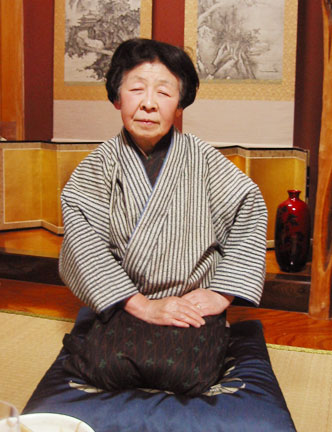
Part of the Eurocentres program is to arrange homestay with a Japanese family as part of the school experience. I felt (as did most students) that staying in a Japanese home was a critical part of the experience. Not only did you get several more hours of Japanese-speaking in (all of our homestay families spoke Japanese at home), you also learned the cultural practices that go with the home -- instead of just the ones that go with work or school.
My homestay mom was Yoshikawa Masako (family name first, which is the Japanese style), pictured at left. Yoshikawa-san is a very active retired schoolteacher in Kanazawa. Yoshikawa-san was a wonderful host and friend. She talks a mile a minute, is active and interested, and (see below) was an amazing cook.
















